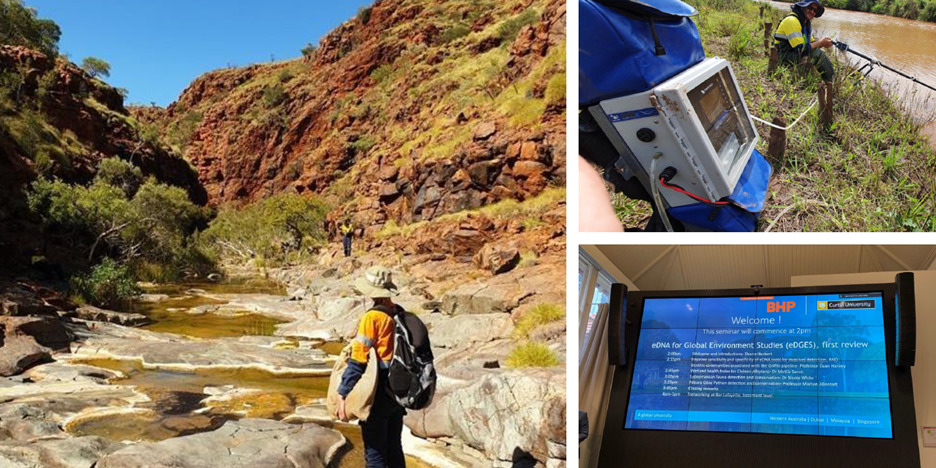Environmental DNA (eDNA) is an effective tool to identify the presence of cryptic species as it detects genetic material released by organisms into the environment.
To learn more about the applications of eDNA, Hydrobiology staff from our Perth office attended the inaugural eDNA for Global Environment Studies (eDGES) 2020/2021 annual meeting presented by Curtin University and BHP. We heard summaries on a variety of application areas from subterranean fauna detection and conservation to metabarcoding tools for invasive marine species detection.
Hydrobiology is at the forefront in the application of eDNA to a wide range of environmental monitoring challenges around Australia and overseas.
Closer to home, here in Western Australia Hydrobiology sampled eDNA at freshwater pools in the Pilbara as a non-invasive way to understand what fish and amphibians inhabit these areas, and rely on these refuges during the dry season. Our sampling also detected the more elusive vertebrates using the pools, like dingoes and feral pigs.
Farther afield, eDNA sampling has been used by Hydrobiology in lakes in Bangladesh to investigate the presence of cryptic and/or threatened fish species and Brazil for freshwater and marine vertebrates.
Thanks to Curtin University and BHP for organising the event and we look forward to more like this in the future!





